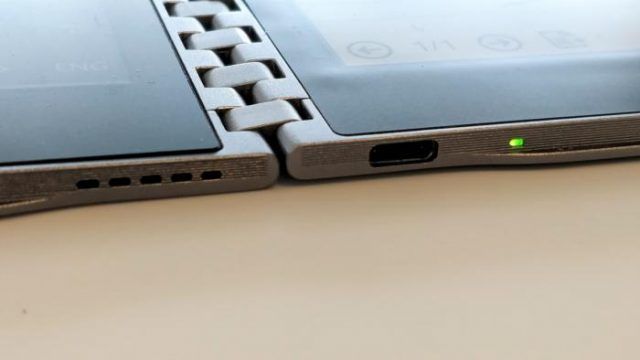The Intel story we know so far is from a company that focuses on processor development, but for some time now the company has been working on two folding wall projects that connect companies like Samsung, Apple or LG.
As the source mentions, Intel wants to take a leap in the technology market by making devices that will fascinate users at this point.
According to Murali Veeramoney, who manages the project, Intel’s goal is “to develop a multifunctional device.
Tiger Rapids, a computer with LCD screen and EPD
Tiger Rapids is the name of the first device produced by Intel whose design is a super slim device that opens like a conventional notebook, i.e. it has two screens, one on the left and one on the right side of the notebook.
The left screen is a 7.9-inch LCD screen that looks like a PC desktop with Windows 10 as the operating system, a Kaby Lake Core processor with an SSD and an unspecified storage capacity.
While the right side is an electronic paper display (EPD) either believe it or not, the best part is that it consumes almost no power and is designed specifically for digital ink with a light touch that makes you feel like you’re writing on paper, the Tiger Rapids finally has a single USB-C port and a battery life of 13 to 15 hours.
The ultimate guide to knowing the type of graphics card is for you.
Copper Harbor, a set of two LCD screens
The second device is called Copper Harbor, and unlike Tiger, it is smaller and lighter. But that’s not the only difference: the developers have replaced the EPD electronic ink display with a second LCD panel.
In addition, this prototype has gyroscopes, cameras, and position sensors, and has excellent connectivity because it incorporates an LTE chip that allows you to connect to the Internet from anywhere.
Copper Harbor has two symmetrical screens, but they can behave autonomously, as each screen can show different things, and additionally allows to visualize the same in both screens, as it mimics the operation of a conventional tablet.
At the moment, these devices are only prototypes used by the company itself, but in view of the expanding world of folding walls, in the future, we can see such devices on the market.
